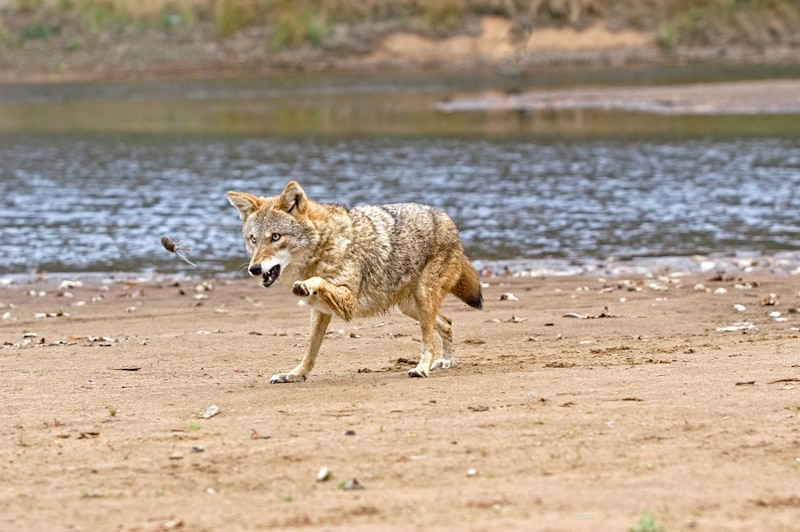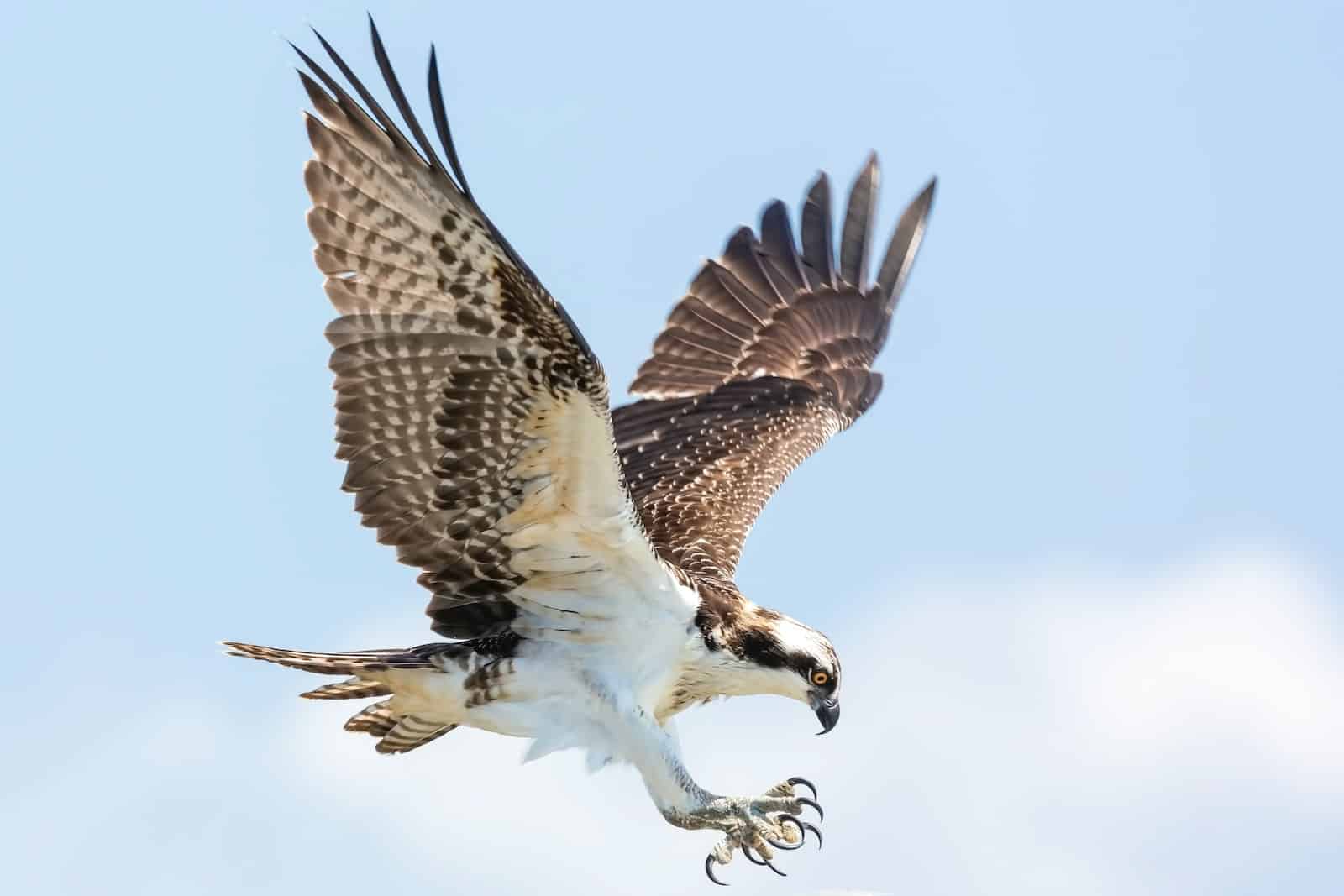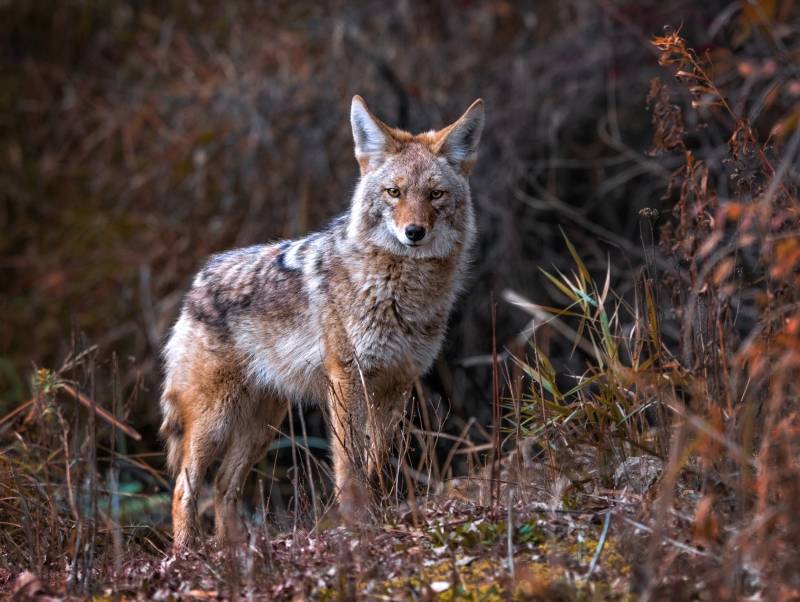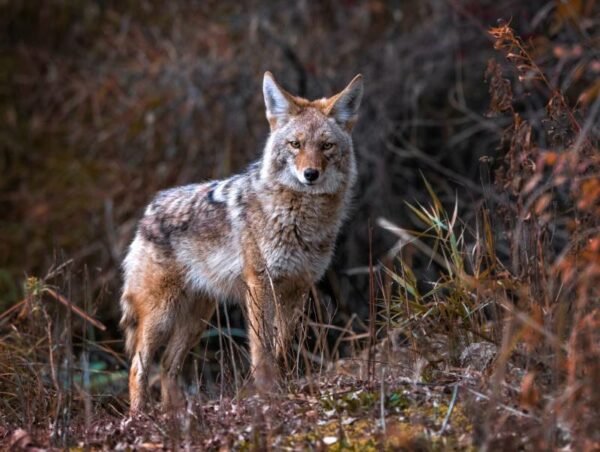Up until two years ago, Dolly and Spot were city dogs. The only wildlife they encountered were squirrels and birds of the nonpredatory variety. We did run into a possum once on an after-dark walk, and its glowing eyes and hissing hello sent us running as if a pack of hellhounds were in pursuit.
We live in suburban Phoenix now, just a few blocks from miles and miles of reservation and state lands. More than once I have pulled over to check out a lost dog only to discover it was a coyote that didn’t want or need my help. And during a game of fetch in the green space near our home, a large bird at the far end caught my eye, but thankfully not the pups’ attention. It was a hawk, just hanging out on the grass. I decided it was time to head inside.
The need to keep pets safe from predator attacks gets its fair share of coverage by the media, but typically only when a coyote snatches a celebrity’s dog or a hawk drops a puppy from the sky. Regular dogs and cats go missing every day. Distraught owners often never know the fate of their beloved pets, but in certain areas of the country they can assume the worst.
With that in mind, I put together the following tips for protecting dogs against two common predators: coyotes and birds of prey. Check out Catster for info specific to kitties.
Coyotes

These pack animals live in every state except Hawaii. Coyotes eat whatever they can find, from seeds and fruit to small animals, both alive and dead. They pose a particular threat to cats and dogs weighing less than 25 pounds. That said, two coyotes could take down a larger animal, according to Rory Aikens, Public Information Officer with the Arizona Game and Fish Department. He explains, “One will keep the dog’s attention, while the other comes up behind to hamstring it.”
Aikens also corrects a common misunderstanding about coyotes. Many informational resources state that coyotes breed once a year in the spring, and that pet owners should be hyper-aware during this time, because the presence of pups increases food requirements for the pack. Aikens says coyotes can produce up to six litters per year, and stresses the need to stay vigilant no matter the season.
1. Start in your backyard
While a wily coyote can breach just about any barrier, some do exist to keep the predators out if you have the freedom (read: no homeowners association) to install them. A coyote-proof fence measures 6 feet tall or higher and has a roller bar or 15-inch woven-wire extension on top. It also extends into the ground or has a wire apron to prevent coyotes from digging under and into your yard.
Presented by Porch: Calculate how much it would cost to build a fence with Porch.com >>
If HOA regulations prevent you from creating such a barrier, do the following to make your yard less attractive to the predators:
- Install motion-sensitive lighting.
- Trim landscaping to eliminate hiding places.
- Add a roof if you have an outside kennel.
- Remove bird feeders, pick up fallen fruits and nuts from trees, and regularly harvest gardens; the food attracts not only coyotes but also their natural prey.
- Keep trash bins in the garage or use animal-resistant models if allowed by your collector.
These efforts also deter invading mountain lions and bobcats, especially if you remove cavelike areas and water sources such as fountains. They also discourage nuisance animals such as possums and raccoons.
2. Change your behavior
If you live in an area where coyotes regularly roam, also make a habit of the following:
- Keep food and water bowls inside.
- Supervise your dog while in the yard, especially at dawn and dusk; never tie your dog up outside.
- Close any pet doors before dusk each day.
- Do not allow your dog to interact with wildlife; doing so teaches him or her it’s okay to approach strange animals.
- Never feed wildlife.
- Use a 6-foot, nonretractable leash and avoid walking at dawn and dusk.
3. Know how to handle an encounter
If you cross paths with a coyote while walking your dog, get a firm grip on the leash, make eye contact with the predator, and slowly back away. If the coyote approaches, wave your arms over your head and yell at it. I like to think I would shout, “GO AWAY, STUPID COYOTE, OR I’LL DROP AN ANVIL ON YOUR HEAD,” but I suspect a terrified sort of grunting would come out instead. If it seems intent on getting closer, start throwing anything within reach — rocks, dirt, a shoe — to let the coyote know you pose a threat. You also can take along a personal alarm, walking stick, and pepper spray for defense.
Use these same scare tactics if you spot a coyote in your yard. You can shine a flashlight on the coyote or turn a hose on it. “Coyotes are smart, incredibly smart, and they know they cannot survive long if injured. Their response, typically, will be to get the heck out of there,” Aikens says.
He also advises, “Don’t come between your pet and the wild animal.” Now, my first instinct would be to do exactly that, but Aikens says that scaring the coyote off serves as your best course of action. If you concentrate only on grabbing your dog, you take your attention away from the coyote; your dog also may bite you in the stress of the situation. He suggested keeping a baseball bat handy in case you do need to break up a physical altercation between your dog and a coyote. And while harming a coyote while protecting your pet typically won’t land you in trouble with the law, the use of certain weapons within city limits may.
Birds of Prey

Which birds of prey soar above your neighborhood depends on where you live. In the Phoenix area and throughout most of the Southwest, the red-tailed and Harris’ hawks and the great horned owl pose the biggest threats to small dogs (weighing less than 20 pounds) and cats. The hawks hunt rodents and ground-dwelling prey during the day, while the owl comes out during low light and at night to catch ground-dwelling and flying animals. Unfortunately, according to Aikens, domestic cats make up a significant portion of the great horned owl’s diet in this area. Hawks and owls pose a year-round threat in the Southwest, one that only increases from September through April when northern birds of prey take up residence.
1. Provide additional protection
Many of the actions you take to protect your dog against coyotes will carry over to birds of prey. Adding a roof to an outside kennel or otherwise providing secure shelter in your backyard remains key to keeping your pet safe; if the hawk or owl can’t see your dog, he or she doesn’t exist as prey. My parents have the perfect setup at their home, a spacious covered patio enclosed by a pool gate. Dolly and Spot can safely nap the afternoon away there, and they regularly do. Also, trim dead branches from trees to eliminate places to perch or nest.
2. Know how to handle an encounter
If a hawk or owl does show up in your yard, bring your dog inside if necessary, then scare the bird off; the beam of a flashlight will send a great horned owl flying. If a bird of prey builds a nest in your yard, keep your dog away until the babies leave, then remove the nest; removing one that contains eggs or nestlings violates state and federal laws, as does harming birds of prey in general.
3. Educate your neighbors
It takes a neighborhood to ward off predators. “If you’re doing everything right, but your neighbor is doing everything wrong, you’re going to have conflicts with wildlife,” Aikens says. He stresses the importance of educating newcomers to an area, as they may not fully understand the threat. And while you won’t likely convince a bird-loving neighbor to take down her feeders, you can take action if a coyote gets too comfortable due to a neighbor’s actions.
“If you’ve got a wild animal, like a coyote, that has obviously lost its fear of humans, it could pose a danger. We want to hear about that,” Aikens says. You can find contact information for your local office at the U.S. Fish & Wildlife Service website.
Featured Image Credit: Annette Shaff, Shutterstock










